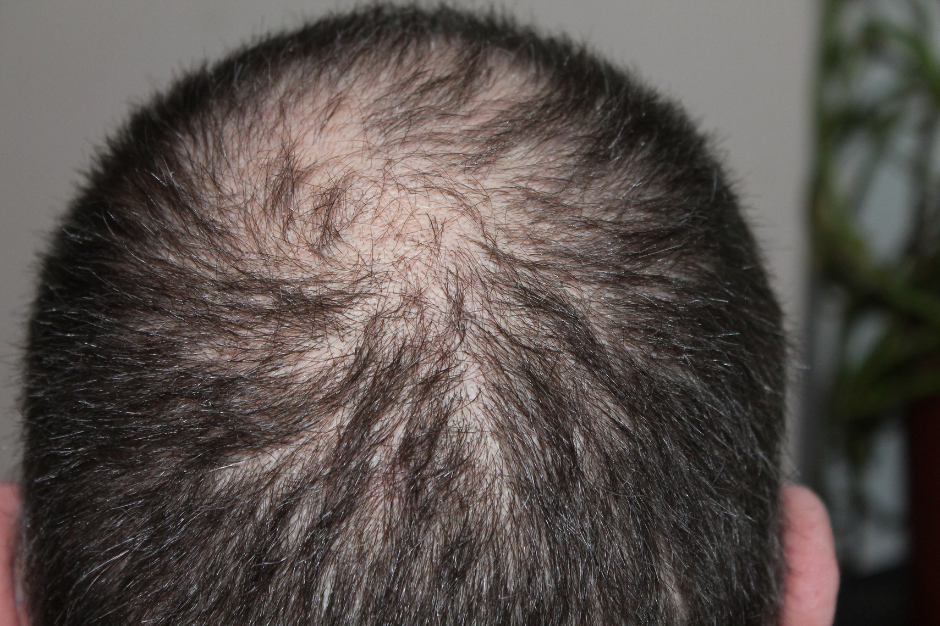Notifications

8 minutes, 14 seconds
-6 Views 0 Comments 0 Likes 0 Reviews

Hair loss in men often begins subtly. You might spot more hair on your pillow or notice your hairline creeping back. These early signs can cause concern, especially when the mirror reflects something you didn’t expect. Many men wait too long before taking action, assuming hair loss is just a part of aging they must accept. But delaying treatment can limit results. Knowing the right time to start using hair medicine for men makes a huge difference.
Start hair medicine at the first signs of consistent thinning or recession.
Early treatment preserves existing hair and may trigger regrowth.
Minoxidil and finasteride remain the most effective options for male hair loss.
Consistency and patience matter—results often take months to appear.
It’s easier to maintain hair than to bring it back after full loss.
Male pattern baldness, also called androgenetic alopecia, causes over 90% of hair loss in men. It stems from genetic factors and the hormone dihydrotestosterone (DHT). This hormone shrinks hair follicles, making them weaker and thinner over time. Eventually, the follicles stop producing hair entirely.
Hair loss typically begins at the temples or crown and gradually spreads. While some men notice thinning in their 30s or 40s, others start losing hair in their early 20s. The earlier it starts, the more aggressive the pattern may be.
You should start using hair medicine as soon as you notice consistent thinning or shedding that doesn’t grow back after a few months. Early action increases the chances of saving existing hair and possibly regrowing some lost strands.
Here’s a practical rule of thumb:
If your hairline is noticeably receding
If the crown starts showing more scalp
If you find more hair in the shower or on your pillow regularly
If styling your hair becomes harder due to thinning
These are signals that hair loss has moved past seasonal shedding or temporary stress-related loss. Acting fast gives medicine more hair to work with.
Two medicines dominate the male hair loss market:
Minoxidil (Topical)
Available without a prescription, minoxidil boosts blood flow to the scalp and encourages follicles to stay active longer. Men usually apply it once or twice daily to thinning areas.
Finasteride (Oral)
This daily pill blocks DHT, the hormone responsible for follicle shrinkage. It slows or stops the progression of male pattern baldness in most men and even regrows hair in many cases.
Some men also add supplements like biotin or saw palmetto, though results vary. Dermatologists often recommend combining treatments for better results, such as minoxidil plus finasteride.
Hair medicine works best before hair follicles shrink completely. Once the follicle closes off, no treatment can bring it back. That’s why early use leads to better outcomes.
Think of it like preserving a lawn. It’s much easier to keep grass green and thick than it is to revive a patch of dead turf. The same idea applies to your scalp. Medicines like minoxidil and finasteride maintain what you still have while possibly reversing some damage. Waiting too long lowers the odds of recovery.
Here are some early signs that suggest it’s time to consider hair medicine:
Noticeable changes in your hairline over 6 months
A visible thinning spot at the crown
Shedding more than 100 hairs per day
Hair looking flat or lifeless
Family history of hair loss, especially if you're under 30
If your father, uncles, or older brothers lost their hair early, your chances rise. Starting hair medicine early could delay or reduce the severity of your own hair loss.
Hair medicine doesn’t work overnight. Most men begin to see visible results after 3 to 6 months of consistent use. At first, some even experience more shedding. This “shedding phase” is a sign that the medicine is pushing out weaker hairs to make way for stronger ones.
Minoxidil and finasteride often take a full year before reaching peak performance. Patience and consistency play key roles. Stopping treatment can lead to losing gains made, especially with minoxidil, which requires ongoing use.
While early treatment gives the best chance for success, men who’ve had hair loss for years may still see some improvement. Finasteride may slow further loss, and minoxidil might thicken weak, fine hairs. However, completely bald areas likely won’t regrow without procedures like hair transplant surgery.
If you’re unsure whether to start, consult a dermatologist. Or reach out to Synergy Pharmacy for expert guidance and treatment options tailored to your stage of hair loss. Delaying that decision can cost you valuable time—and hair.
1. Can I use hair medicine even if I’m only 20 years old?
Yes. Age doesn't determine when to start—signs of hair loss do. If you're losing hair in your 20s, early treatment improves your chances of keeping it.
2. How long do I need to use minoxidil or finasteride?
You’ll need to use them continuously. Stopping will often result in losing the hair you’ve maintained or regrown.
3. Are there side effects with hair medicines?
Yes. Minoxidil can cause scalp irritation, while finasteride may lead to sexual side effects in a small percentage of men. Most users tolerate both well, but talk to a doctor before starting.
4. Can I use both minoxidil and finasteride together?
Yes. Many men combine both for stronger results. They target different causes of hair loss, and using both increases your odds of success.
5. What if I don’t see results after a few months?
Stick with it. Most treatments take at least 3–6 months before showing improvement. Hair grows in cycles, so visible changes take time.

